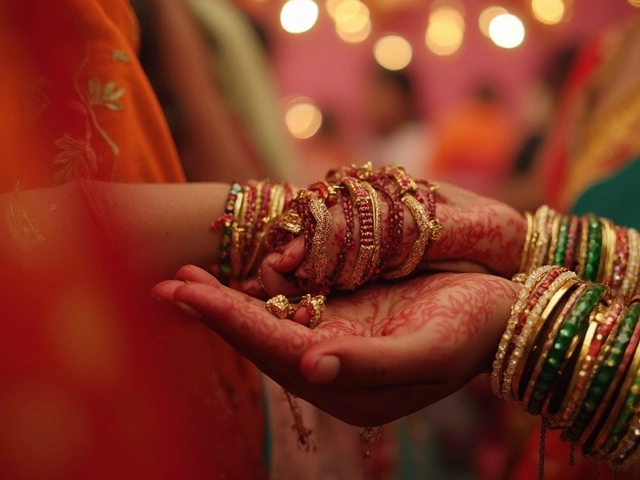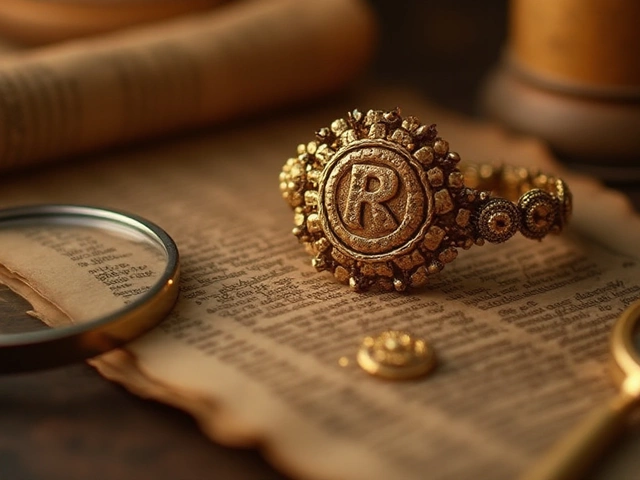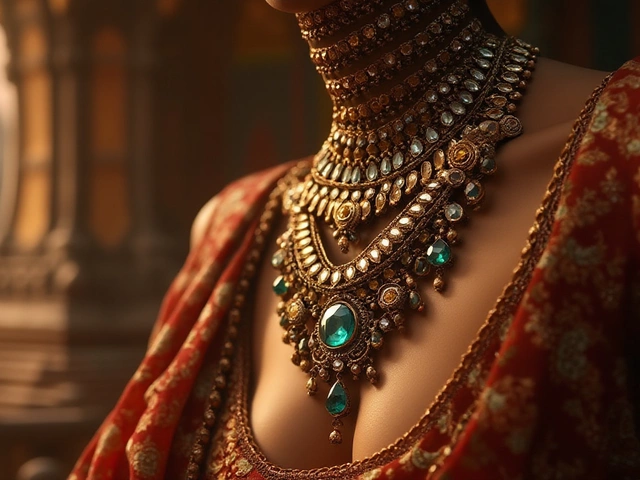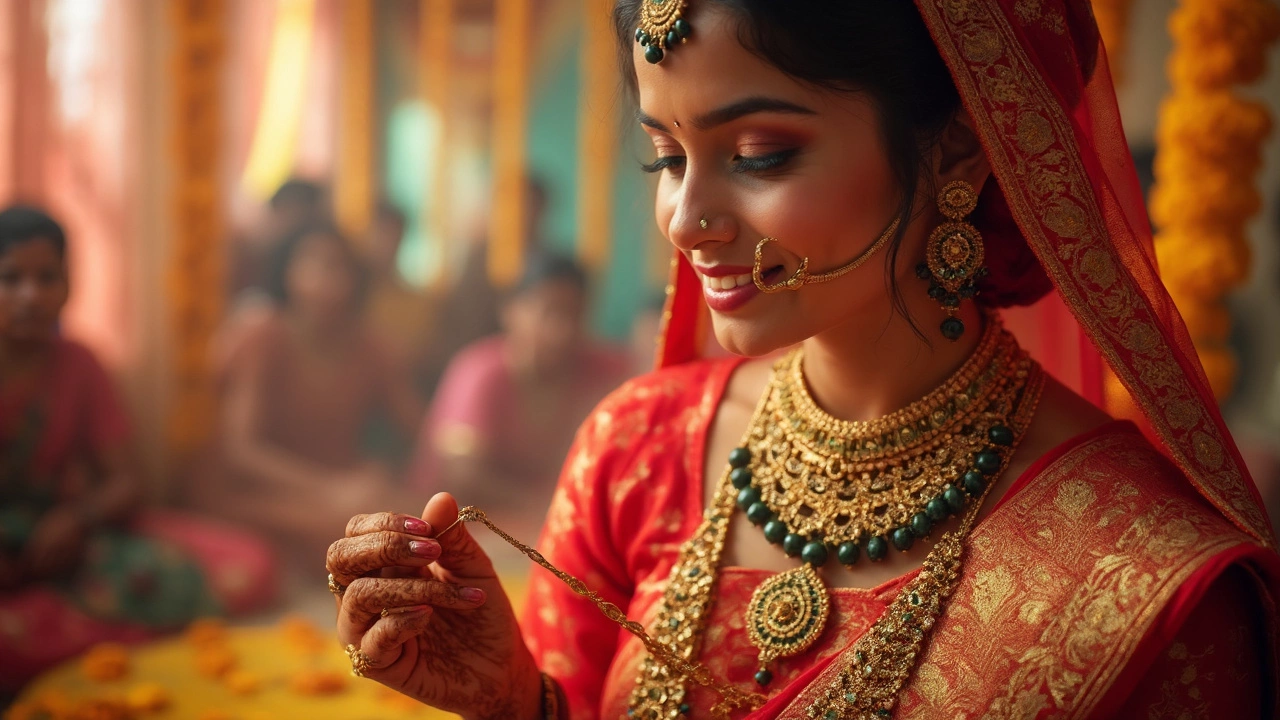
It’s hard to miss those small black beads when you spot a mangalsutra, right? They’re not for decoration only—they’re packed with meaning and tradition. People usually think these beads are just another style element in Indian jewelry, but there’s way more to the story.
The main reason for using black beads in mangalsutra is protection. Families believe these beads act like a shield, keeping away any bad energy or the so-called ‘evil eye.’ It’s like a good luck charm designed just for a married woman. That belief runs deep—ask your grandma or any newlywed, and they’ll tell you the beads are there to keep the relationship safe and strong.
- The Origins of Black Beads in Mangalsutra
- Symbolism and Superstitions Around Black Beads
- Modern Mangalsutra Designs and Black Beads
- Choosing and Caring for Your Mangalsutra
The Origins of Black Beads in Mangalsutra
The story of the mangalsutra goes way back—over 5,000 years, if you dig into early South Asian history. The practice of tying a thread or necklace to mark marriage is an old one, but the idea of adding black beads has its roots in protecting newly married women. In ancient times, these beads were believed to have magical properties that could ward off evil spirits and negative energy, especially jealousy from others or what’s called the ‘evil eye’.
What’s pretty interesting is that black beads weren’t just chosen randomly. Across different communities in India, black is viewed as a color that soaks up bad vibes. People in many Indian regions believed this quality would help keep a woman and her marriage safe. That’s why even now, no matter how modern or stylish the mangalsutra designs get, you’ll still spot those tiny black beads front and center.
The beads are usually strung on either cotton thread, gold, or a mix of gold and black beads, depending on local customs. Some families even insisted on a certain number of black beads—odd numbers, like 9 or 21, were considered lucky. Other places stuck to strict rules about when the mangalsutra had to be worn, like during festivals, big family functions, or every single day after marriage.
| Region | Typical Bead Count | String Material |
|---|---|---|
| Maharashtra | 9, 18, or 21 | Cotton thread or gold |
| South India | Varies, usually plenty | Gold or silk thread |
| North India | Odd numbers often preferred | Gold chain |
So, the use of black beads isn’t just about tradition; it’s about a real belief in keeping love and family safe. Even today, people still look for authenticity in their mangalsutra—the old-school beads get mixed with new styles, but the core idea remains the same.
Symbolism and Superstitions Around Black Beads
Ask anyone about the mangalsutra, and you’ll hear a lot about what those black beads mean. In most Indian families, especially in Maharashtra and South India, these beads aren’t optional—they’re the heart of the mangalsutra. The common belief? They keep the couple safe from the “evil eye,” or negative vibes from jealous people.
Stories and superstitions have stayed strong over the years. Many say if even one black bead breaks or falls off, it’s a bad sign. Some women get worried and rush to fix it right away. The black color is seen as powerful against bad energies—like wearing a security shield on a necklace.
- Each bead stands for the bond between husband and wife, almost like saying each moment of their relationship is protected.
- In some places, people say the mangalsutra has to touch the skin to work its magic.
- Astrologers and old-timers claim the beads are blessed during the wedding ceremony and stay lucky as long as the chain isn’t broken.
- Some women keep a spare set of black beads at home, just in case, because they think missing beads might bring stress or problems in marriage.
Here’s something you might not know: earlier, the number of black beads was set—usually 108 or 9, both considered lucky numbers. These numbers link back to Hindu traditions and have spiritual value.
These traditions blend in with modern life too. I remember Maya was nervous the first time she lost a bead. Her mom told her it’s always better to get it fixed soon (just in case) and not to ignore even small things about the mangalsutra.
Even now, plenty of women follow these customs, whether they fully believe in the superstition or just don’t want to take any chances with something so personal.
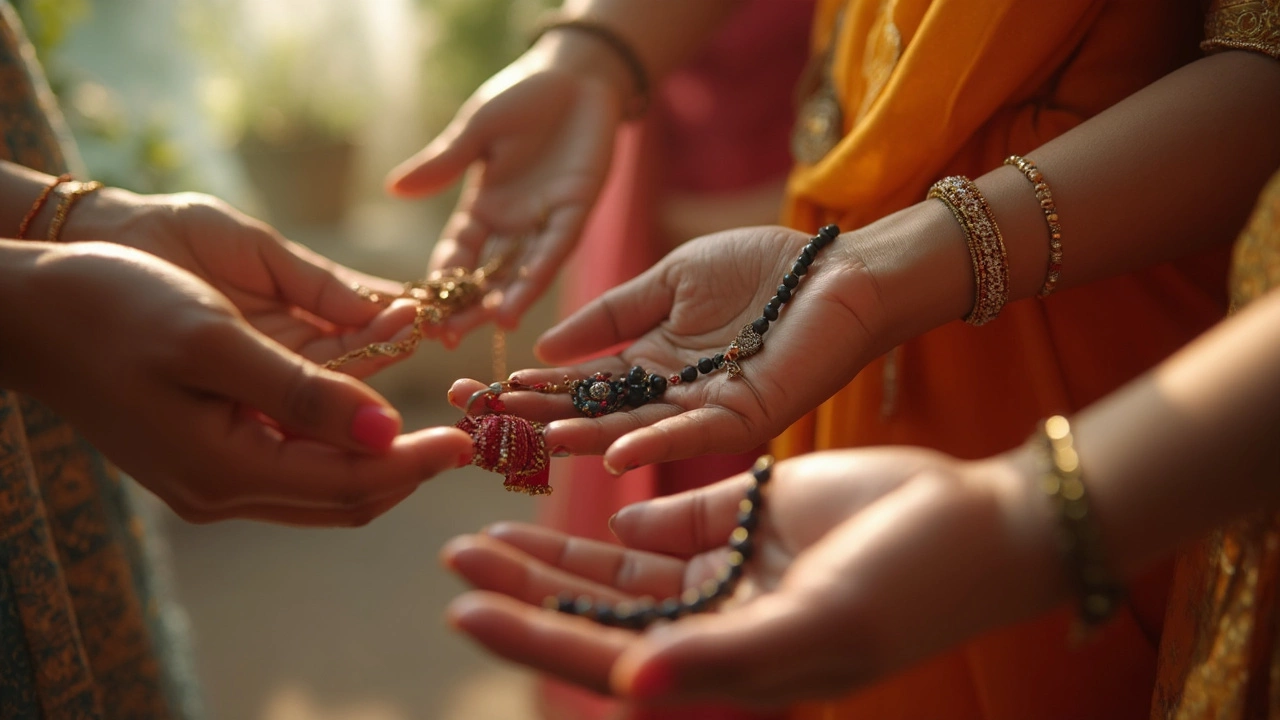
Modern Mangalsutra Designs and Black Beads
If someone says mangalsutra is old-school, they haven’t seen what’s out there these days. Black beads still play a big role, but designers are getting creative with how they use them. You’ll spot mangalsutras that are short like a choker, long and sleek, or even paired with diamonds and colored stones. The classic all-black bead chain is just one option now.
Today’s couples want their jewelry to feel personal. So, you’ll find mangalsutra designs where black beads are mixed with gold tubes, pendants with initials, or even tiny charms. Maya, my wife, picked one with a simple gold bar and just a few black beads on each side—way easier to pair with Western outfits. It’s way more practical for daily wear than what our parents wore, but the black beads are still there, holding onto that protective vibe.
With online shopping, the variety has just exploded. Here’s a breakdown of features you’ll see in modern mangalsutras:
- Diamond-studded pendants (sometimes shaped like hearts or flowers)
- Lightweight single-string chains with black beads spaced apart
- Multi-layer styles mixing black beads and gold links
- Minimalist designs made for office wear
- Custom engraving or personalization, like couple names
But there’s one thing that never really disappears—the black beads themselves. They’re still front and center, even if the rest of the chain is all about modern bling. Some jewelers even say black beads now come in different sizes and patterns, to fit new styles. Check out this quick snapshot of the most common types you’ll find:
| Design Type | Black Bead Arrangement | Popular With |
|---|---|---|
| Choker Mangalsutra | Tightly packed beads, small pendant | Young professionals |
| Layered Mangalsutra | Multiple strands, spaced beads | Fashion-forward buyers |
| Diamond Mangalsutra | Few beads near clasp, diamond pendant | Celebrities and urban couples |
| Classic Chain | Regular pattern throughout | Traditionalists |
The fun part? You can now buy adjustable mangalsutras, so you don’t have to worry about swapping chains for every outfit or event. Mixing tradition and style was never this easy. So if you thought you’d have to pick between culture and convenience, the new generation of mangalsutras proves you can definitely have both.
Choosing and Caring for Your Mangalsutra
Picking the right mangalsutra is more than just picking a necklace—it’s about comfort, tradition, and making sure the black beads really stand out. First off, decide if you want a classic look with lots of black beads or a trendier vibe with fewer beads and more gold. Some women prefer simple, thin chains for everyday use, while others go for heavier, dressy pieces for special occasions. Lightweight mangalsutra designs are super popular for daily wear since they're easy to manage and less likely to tangle or break.
When shopping, pay close attention to the materials. Always check if the gold is at least 22 karats, which is a standard for most authentic mangalsutra. And if you have sensitive skin, look for hypoallergenic options—no one wants itchy neck problems. Many people are starting to look for custom designs now, so don’t be afraid to ask the jeweler if you want shorter chains, added diamonds, or fewer black beads.
Once you’ve got your mangalsutra, taking care of it is key. These black beads might look tough but they can chip or fade over time if you’re not careful. To keep it looking new:
- Take off your mangalsutra when using chemicals—think cleaning, swimming pools, or even heavy-duty lotions.
- Clean it gently with a soft cloth and a mild soap solution every month. Skip harsh chemicals or jewelry dips; they can mess up both the gold and the black beads.
- Store it by itself in a soft pouch or jewelry box to avoid tangling and scratches. Mangalsutras, especially those with lightweight chains, are known to get knotted fast if tossed in with other jewelry.
- Check the beads now and then. If you spot a broken or missing black bead, head to your jeweler and get it fixed ASAP so it keeps its symbolic power and classic look.
Did you know? According to a 2023 poll by a well-known Indian jewelry blog, about 72% of women said they preferred their everyday mangalsutra to be lightweight and simple but always wanted genuine black beads for authenticity and tradition. That just shows the balance between modern style and sticking to roots.
One last tip—don’t wash your mangalsutra in hot water or leave it in the sun for long. Extreme heat can crack the beads or even mess up the gold. Treat it well and it’ll hold up beautifully, keeping you stylish and connected to tradition every day.
